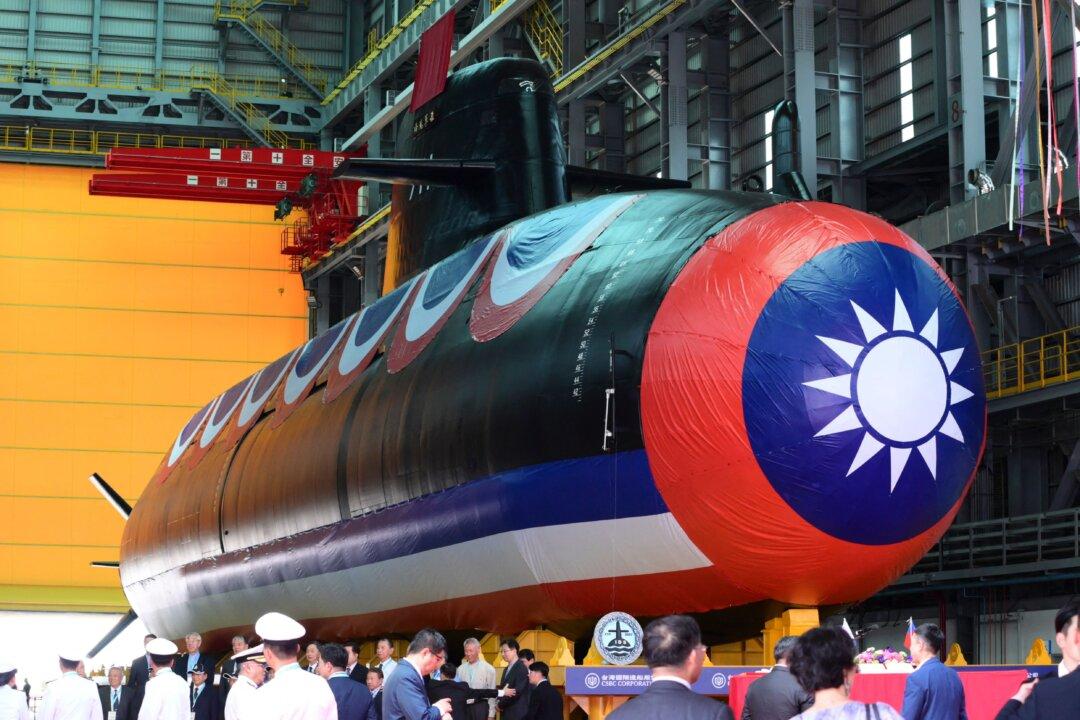Taiwan on Thursday unveiled its first domestically-built submarine as the self-ruling island seeks to bolster its military deterrent in the face of increasing Chinese threats.
Taiwanese President Tsai Ing-wen presided over the launch ceremony of the submarine “Narwhal”—which is also referred to as “Hai Kun” in Taiwan—in the southern city of Kaohsiung on Sept. 28.





